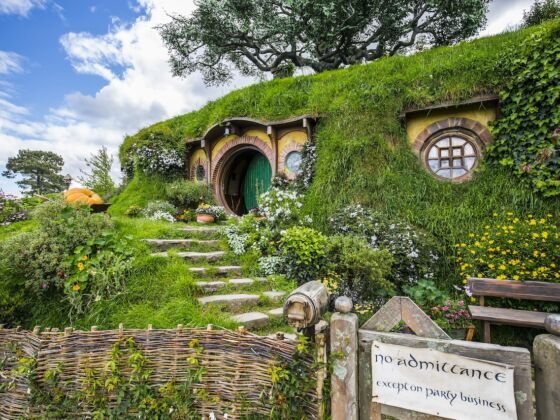The first time I remember seeing a film and wanting to be transported to its locations was The Lord of the Rings. It took me a decade to make it to New Zealand, but many other people seem to have had a similar idea. After the film series, New Zealand effectively used photos of its stunning natural environments to brand itself as the fictional world of Middle-earth. The country’s tourism campaigns have generated a 50% increase in arrivals since the first film was released.


This kind of tourism resulting from film and television has been called “screen tourism,” and both governments and companies want to make the most of the bond travelers feel with the entertainment they consume. Theme parks making use of beloved characters and worlds are nothing new, but they seemed to have been reinvigorated with Universal’s Wizarding World of Harry Potter, which is now in Orlando, Hollywood, and Osaka. All three broke visitor records on opening and have forced Disney to respond with new lands based on Avatar and Star Wars, the latter of which is generating particular excitement among fans.
Film and television are not the first cultural products to inspire people to travel to particular locations. Books also served this purpose in the past, but there’s an important difference between tourism inspired by books and by screen. Books undoubtedly create an emotional connection given how long the reader spends with the characters, but the connection to particular locations is often not as strong. The visual medium of film and television makes locations more identifiable to the viewer, allowing them to find the exact location they saw on screen when they travel.
Game of Thrones and Star Wars are the entertainment properties currently generating the most tourism, and the data shows they cause significant tourism boosts. Game of Thrones was one of the factors that led Iceland to jump “from approximately 566,000 visitors in 2011 to over 1 million visitors in 2015,” not to mention the numerous productions that followed it to the island nation. TripAdvisor estimates that locations featured on the show experience a 120% increase in tourist interest. Since it started filming in Croatia, the country’s economy has seen a 10% boost due to increased tourism, and Northern Ireland estimates its economy has benefited to the tune of $110 million (£82 million) from the series.
Screen tourism contributes $189 million (£140 million) to the economy of the United Kingdom each year, according to film consultancy Olsberg. It should come as no surprise that movies like the Harry Potter series fuel tourism — the Alnwick Castle, which was used for Hogwarts in the first two films, has had a 230% increase in visitors since 2011 — yet even smaller franchises like 2010’s Alice in Wonderland have boosted tourism in the areas they were filmed.
But why does film and television push so many people to seek out the locations they see on screen?
There’s something particularly magical about watching stories play out for a few hours — or years, in the case of some TV shows — and then stepping foot in that same location. The feeling is hard to describe, but I’ll never forget the ebullient joy I experienced when I walked through the grassy walls of Gandalf’s Cutting to see colorful round doors peeking out from the lush green hills. I had first seen them fourteen years earlier when my father took me to The Lord of the Rings: The Fellowship of the Ring at the cinema and I fell in love with Peter Jackson’s representation of the world that J.R.R. Tolkien had created.
Entertainment may inspire bucket lists, but there’s another element in its relationship to travel. When you see a place you’ve visited show up in a movie or TV show, it adds another layer of depth to the viewing experience. Instead of simply seeing what the director or cinematographer has chosen to show you, you might also think of an experience you had at that location, a restaurant you love that’s just around the corner, or you might simply think it’s cool that a place you have actually visited is on screen in front of you. For many people, that’s a rare occurrence; they don’t live in places where film and television crews tend to flock.
Outside the common desires to achieve a basic standard of living and to be good people, we all find fulfillment in different ways, and it’s worth recognizing that travel and media can work together to create a virtuous cycle of positive fulfillment. Some people may travel first, then see the places they’ve visited reflected back in the media they consume; while others will use media to inspire their own travel. Because they result in positive experiences, both should be cherished as ways we can find more joy throughout both our lives and our travels.